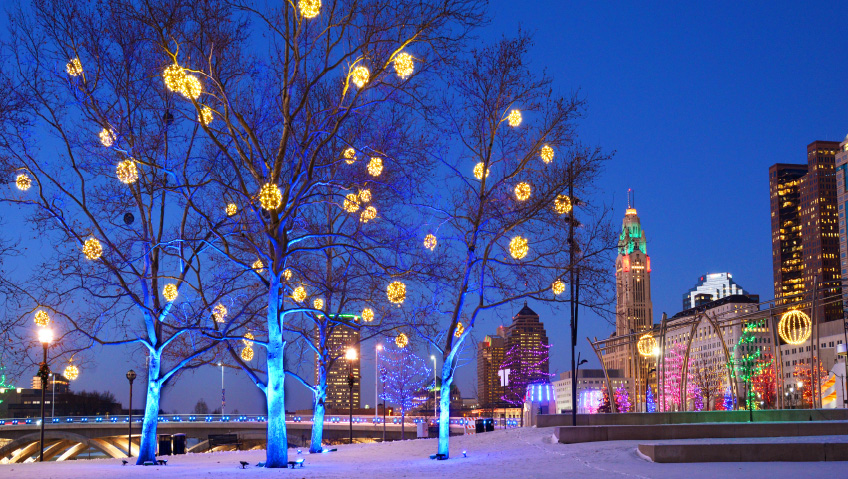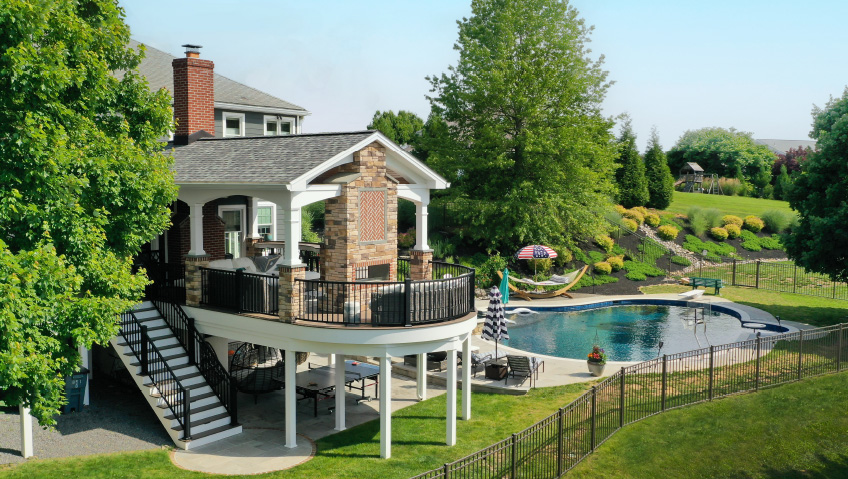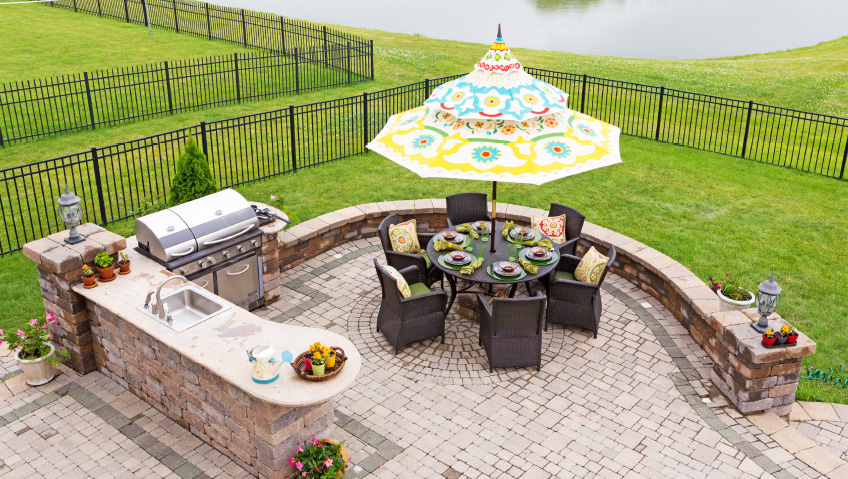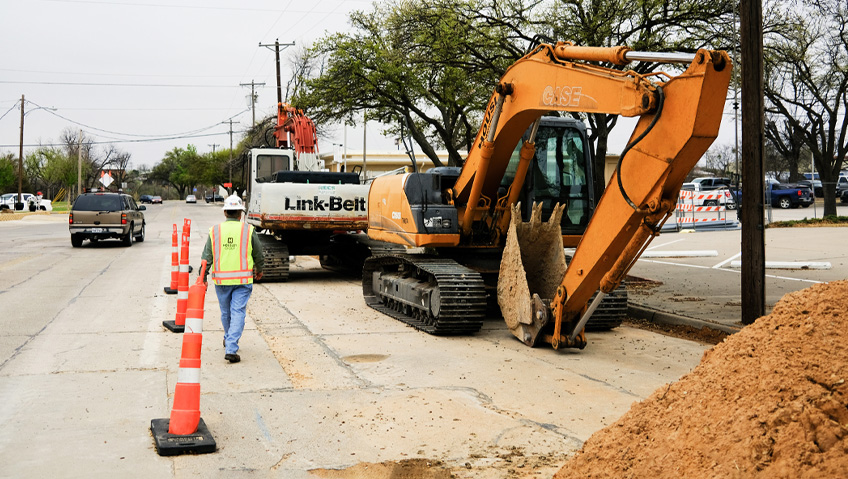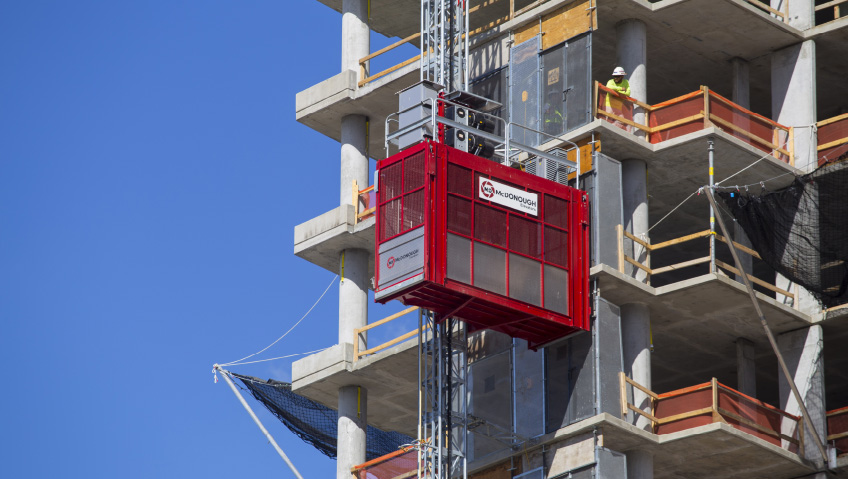The Association of Outdoor Lighting Professionals (AOLP) is on a mission to promote and advance the landscape and architectural lighting industry.
AOLP supports professional lighting designers and installers by establishing professional standards regarding ethics and certifications, as well as providing valuable networking opportunities that benefit the entire industry and, ultimately, the consumer.
The association’s mission is a reflection of the industry’s supportive culture. “The lighting industry is, from what I understand, fairly unique in the fact that we’re all very willing to share our trade secrets,” says Andy Thomas, CLVLT, COLD, AOLP President and the owner of Viewpoint Lighting. “We want more people to be doing it right, versus figuring out the right way and then not letting anybody know how you’re doing it. I think our lighting association is very open to new ideas and to sharing, disseminating those ideas to our membership to make sure that everybody’s getting all the up to date, trending information.”
AOLP is also eager to share news and information with the construction community at large. The association recently released its State of the Industry Report, so Construction in Focus sat down with Mr. Thomas for more details on the latest trends, challenges, and the future of the industry as outlined in the document.
Ongoing growth
The outdoor lighting industry had enjoyed increased growth worldwide over the last 12 to 24 months. The pandemic drove this expansion as people sought to improve their outdoor spaces. Property owners turned their attention outside in order to create a pleasant refuge for themselves during stressful times and for socially distanced entertaining. Outdoor lighting professionals were booked months in advance to keep up with demand, Thomas says, pointing out that, “People weren’t traveling. They were putting money into their houses.”
The dramatic boom has leveled out now that people have more choices on how to spend their money. “I think it has peaked,” says Thomas. “[There is] that pent up demand for people to get out of their house and go back on vacation.”
Even so, the sector remains remarkably strong and the overall growth is expected to continue, even if it might be at a somewhat slower pace. There are still backlogs in backyard construction projects and, after enjoying outdoor spaces during the pandemic, consumers are eager to continue to make the most of those spaces.
Industry trends
Multiple trends are gaining popularity within the industry. One of the top new trends is the automation of lighting controls and home system integration. Consumers want convenient solutions, from dimmable lighting to digital control of lighting systems. They want to easily manage their lighting systems themselves, rather than relying on timers.
Architectural lighting is also on the rise. In addition to lighting their outdoor spaces, homeowners want to direct attention to their houses. Colored LED lighting has become a particularly popular way to put focus on the home as well as the outdoor space. “A lot more people are jumping into color changing LED,” Thomas says. “There is certainly a lot of buzz in the last year or so.” Some of this may be due to recent improvements in colored LED lighting. “The capabilities, and the technology, and the fixtures, and the quality—everything is getting better,” he shares.
Color changing lighting has also become popular for pool lighting, as property owners look for a fun, trendy option to light their pool areas. This demand comes alongside an increased demand for pool lighting overall.
Property owners want a more subtle look for their light fixtures, a demand that is made possible by advancing technology. “[There is] continued modularization and shrinking of fixtures because of the LED technology that is coming out and how the actual light source and components that need to go into the fixtures are becoming smaller and smaller,” Thomas explains. “So now we can get the same amount of light out of a smaller fixture, and the big advantage of smaller fixtures is hiding those light sources.”
Another key trend is a push for catenary lighting systems over the popular café-style lighting. There is still consumer demand for café-style lighting, but there is pressure to find alternatives because of light trespass onto neighboring properties. Designers and installers are working hard to introduce property owners to the advantages of catenary lighting systems, which still provide the hanging wire design element of café-style lighting, but use fewer lights and incorporate shrouds and louvers into the design to direct light away from the sky—and the neighbors.
Emerging technology
Outdoor lighting professionals are enjoying the benefits of new and improved software, which assists in everything from designing to scheduling, offering a solution for nearly everyone. Thomas can attest to the advantages himself; since his company switched to a more advanced software option, “it certainly changed how we manage our workflow.”
Solutions range from turnkey to customizable, which may be particularly advantageous to smaller enterprises. “They’ll custom tailor to your business needs and your business structure based on how many employees you have, and office staff, and who’s doing what role,” Thomas says. “I think, for the small business—sole proprietors or small LLCs—having that sort of software at our fingertips certainly helps professionalize what we do. It’s kind of like having office staff part time, doing some of the stuff that we had to do on pencil and paper, or on spreadsheets, or writing notes on napkins.” With these software solutions, small businesses can “really take the organization part of the business to the next level so that we’re not just scrambling around.”
On the design side, “there are a lot of graphics programs that have come out in the last couple of years that help to capture what we want to do in a conceptual design and convey that information to the client in the proposal process,” Thomas explains. The software makes it possible “to take pictures and graphically represent what we want to do in their yard to show them where the fixtures are going, what we’re going to be doing, get our design intent across without setting up a physical demonstration of the lighting.”
This is a vast improvement over the traditional way of demonstrating a conceptual design, which required that the lighting professional “set up a bunch of temporary lights to show the homeowner what it’s going look like in their yard. If we can do that with pictures and not have to drive out and work at night and set up demos and take down demos, [it] makes selling the projects a lot more efficient.”
The future
Some challenges, of course, remain on the horizon as the industry moves forward. Workforce shortages are predicted to continue, so leading companies are investing in existing talent as well as offering extra perks to entice new employees. Supply chain issues continue to pose difficulties for the industry so, when possible, manufacturers, designers, and installers are predicting their needs and purchasing far in advance to prevent delays.
AOLP continues to welcome new members at an increasing rate. “We’ve grown quite a bit in the last few years,” Thomas shares. As numbers expand, so does the association’s reach and positive impact. “As an association, we’ve been pushing certification both on the technical install side and the design side. And we’re really starting to get more and more people interested in the certifications and getting more people through that certification process. It’s sort of a snowball effect; the more people we get certified, the more people want to get certified.” AOLP offers two professional certifications: Certified Low Voltage Lighting Technician (CLVLT) and Certified Outdoor Lighting Designer (COLD).
To be sure, AOLP is well positioned to continue to make a positive impact as the industry navigates future challenges, ensuring that outdoor lighting professionals are fully supported for many years to come.

